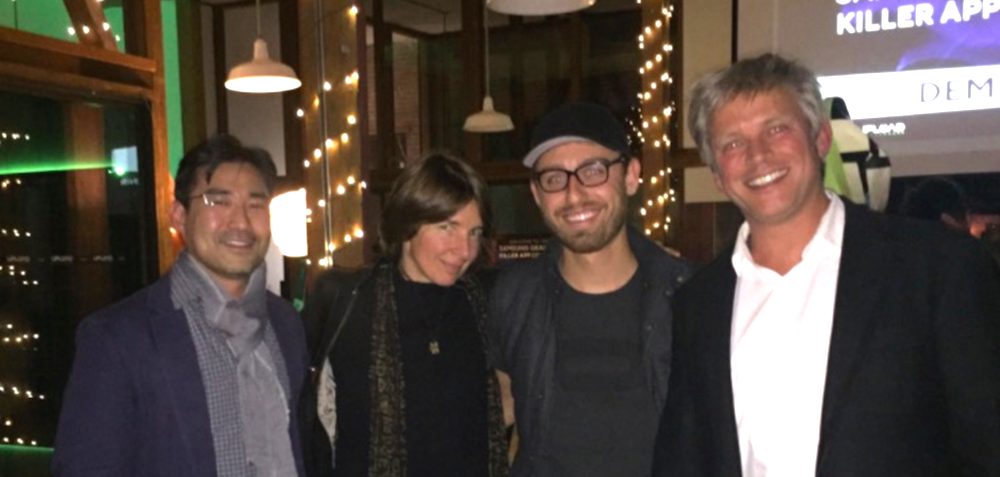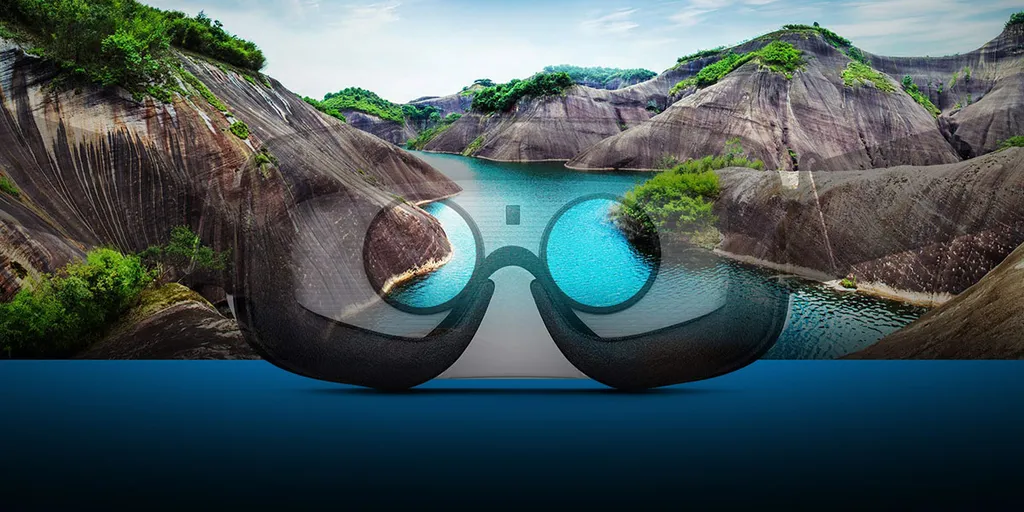The Gear VR Killer App contest hosted by Samsung at the Upload Collective earlier this month brought in a hundred-plus technophiles eager for a chance to check out the finalists — and to find out which (if any) deserved “killer app” status.
“[It] needs to be accessible,” as contest judge Nicole Lazzaro explained, ”create an experience you want to try again (and fun enough where you want to buy the hardware just to play that app), and bring all your friends.”
Or put more simply: A killer app “turns a technology into a product.”

With a perspective like that in mind, the judges chose Virtual Reality Suite, lead developed by Markus Prenneis and Thomas Trzaska of present4D, as the contest’s grand prize winner. Multi-user B2B software for creating and playing 360° VR presentations, the app is optimized for Oculus Rift, Samsung Gear VR, and Cardboard.
The judges were pretty unanimous in their selection of the contest’s overall winner:
“VR Suite was my top choice because it’s a functional tool that can be used for productivity,” said Taylor Freeman, CEO and Chief Evangelist of Upload.
Fellow judge Philip Rosedale, founder and CEO of High Fidelity, concurred: “Although there were many great entries, VR Suite demonstrated both of the two critical elements likely to make VR disruptive: the ability to communicate 1:1 with others, while exploring spaces or experiences that were directly created by oneself and/or others.“
“I gave extra score due to VR Suite’s potential of solving problems on both ends,” fellow judge Paul T. Kim, Director of Content and Services at Samsung, explained: “[It’s] a useful tool to 1) create an interactive, immersive presentation in VR (or using traditional desktop), and 2) consume immersive informative, platform agnostic VR content that can be experienced inside any VR headset.”
Kim sees enormous potential for the app: “A tech savvy real-estate professional may be able to put together a 10 minute VR walkthrough of a 10 million dollar property for an international client, all in about the same amount of time it would take to put together a PowerPoint deck.” He sees applications extending beyond business, too: “Teachers may be able to easily cobble together interactive learning material for students, with existing media like text, photos, audio, and combine it with immersive media like 360 photos/videos which are becoming easier and easier to create.”
The Grand Prize now in hand, Prenneis says the team have a number of upgrades planned for the immediate future, including a customizable interface, real-time 3D support, and integration of gesture control for Oculus Touch and Leap Motion. Follow the developers on Facebook.
Here’s a look at the four other finalists:
Apnea, an underwater adventure game (available in the Oculus store here) by Luca Mefisto of Mefisto Files, uses the Gear VR’s attached smartphone to incorporate real world walking (by stepping in place) and breathing (through the headphone) into gameplay. The player must regulate how much air they exhale, or risk exhausting the oxygen in their scuba tank.
Apnea was a close second favorite for Paul Kim: “It just came down to the game’s very clever implementation of using physical (running) motion to enable mobility,” he said, “which added a dimension of immersion, which would not have been possible if the game employed touchpad-based mobility.”
“Many people have said Apnea is the most clever and immersive experience for mobile they have ever tried,” said Mefisto, “but surely the most symbolic one was a player who did not acknowledge the technical achievement the walking and the breathing detection was. For him, moving like that and having [exhalation] bubbles was just the normal thing: ‘What should I expect? I am underwater, of course bubbles come out when I exhale’. The feeling of being there was so strong he forgot it was all electronics!”
Just released to the Oculus Store, Mefisto may add smartwatch support to the game, “so the user can see his O2 levels and the Geiger Counter needle by looking at his wrist… If the game does well. I will add more stages. I have dozens of ideas I had to leave undone to focus on the release!” Follow the developer on Twitter.
The Dream Cube, by Bracey Smith of Potential Synergy, simulates lucid dreaming by seamlessly merging different locations and moods into the same experience. Lazzaro deemed it the most artistic experience in the contest: “This is at home and unique to VR. The sequences unfold with a hypnotic rhythm that give the piece a Matrix-like quality.” The full version is expected to be released in 2017. Follow the developer on Twitter.
Super Vektoroids, an old school-meets-VR arcade shooter submitted by Damien Labonte of Pixel Strike Games, was enjoyed by both judges and attendees, and recently found another fan: John Carmack.
“I joined him on stage at Oculus Connect 3 for his famous app tear-downs,” says Labonte, “but he kind of went a bit quiet and enjoyed the game at the time (I was pretty nervous during that silence!). I found him on the floor later for another round, and he gave me really good ideas and feedback. I’ll never forget him saying ‘It’s really fun!’”
Expected for release in 2017, Pixel Strike Games plans to add new zones, more enemies, bonus rounds, mini-bosses, and, adds Labonte, “more stuff to remind you of the Golden Age of Arcades! 80s man! We are assembling a dream team of indie musicians now to make the game music and hopefully a cool retro album! Really excited about that!” Follow the developers on Facebook and on Twitter.
The Rabbit Hole, a new puzzle horror game (available in the Oculus store here) submitted by Pedro Matsumura Kayatt of VR Monkey, was another crowd pleaser. It was even recently covered by Upload VR, with Joe Durbin noting, “Not many games can combine atmospheric storytelling with interesting puzzles. The Rabbit Hole pulls it off.”
In future updates, says Kayatt, “We are developing a entire new level for the game, another room with many puzzles and challenges. Also we are remodeling the start menu, and it will [look as if] you are about to enter the rabbit hole.” Follow the developer on Twitter.
As Paul T. Kim said during his opening remarks at the Upload SF event, the contest wasn’t intended to designate the killer app for VR, because it’s likely that many of those will emerge over time.
And ultimately, consumers, not contests, will determine that:
“By definition a Killer App is defined only in retrospect after succeeding in the marketplace,” as Nicole Lazzaro puts it. “That’s the challenge we faced as judges. We needed to assess the potential for the apps to become ‘killer’. Only the marketplace can make an app ‘killer’.”
–
Disclaimer: This is a sponsored post paid for by Samsung.






























